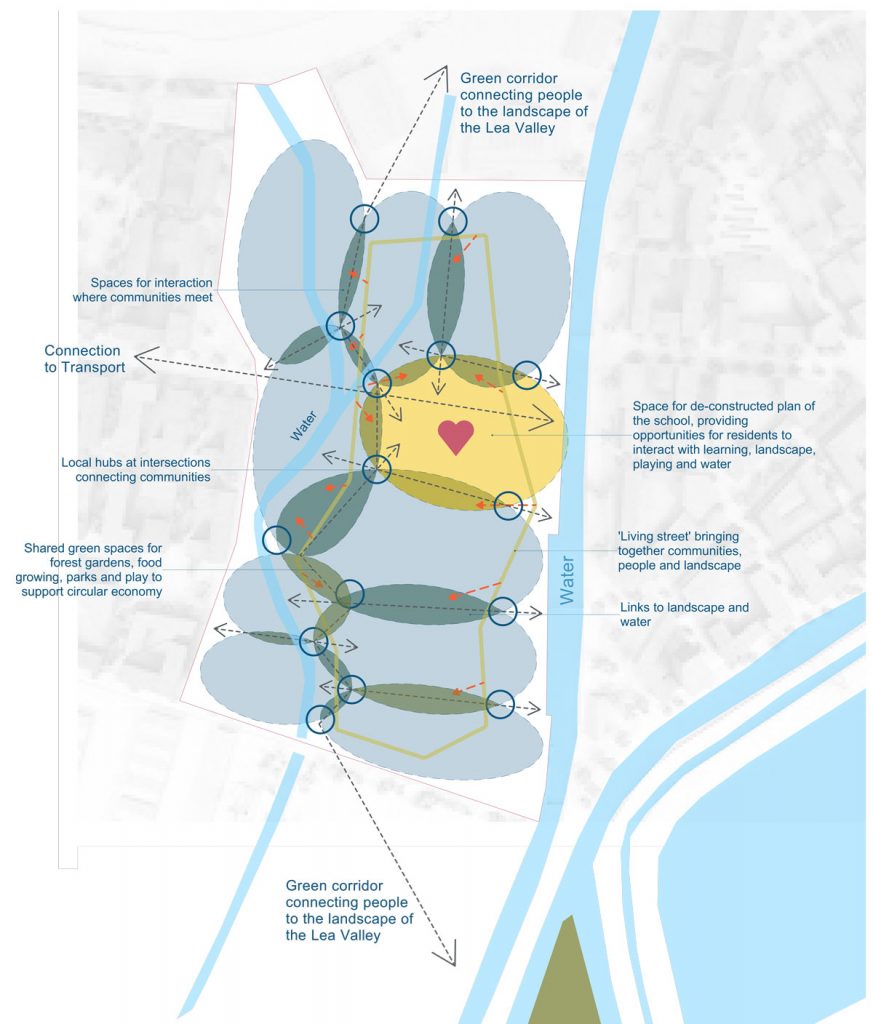News
Meridian Water Ideas Competition Entry
The Meridian Water team recently ran a competition to invite creative teams to propose innovative approaches, at building and district scale, to creating a place that embodies a “triple bottom line” approach to sustainable development –that a place should be measured by the environmental, social and economic benefits it brings.
Seven practices have been placed on the shortlist with an impressive collection of ideas to boost the sustainability credentials of the second phase of the Meridian Water development.
LSI Architects, working in collaboration with landscape architects Sheils Flynn, sustainability consultants Max Fordham, transport planning consultancy momentum, artist Thomas Thwaites and Sociology Professor at the University of East Anglia Dr Vander Viana, submitted an idea for the competition which you can view below.
Intergenerational Living
The team proposed an innovative masterplan designed specifically to facilitate intergenerational modes of learning, work, and play through new and lasting social programs, policies, and useful places integrating effective intergenerational models into the everyday.
The masterplan seeks to introduce multigenerational practices to existing institutions for education, recreation, housing, health care, and employment. For instance, intergenerational housing enables people of different ages to live side by side as good neighbours, to share their talents and community resources, develop meaningful relationships and support and learn from each other.
It provides a safe living space for people of all ages to interact, collaborate and explore the values of each generation.
Social programs, policies, and practices that promote engagement, mutual support, interaction, and exchange between people of different generations take place within a masterplan that provides the instances and environments that are needed to support this intergenerational living model.
Rationale
Increasing age segregation
Our population is aging and we are witnessing a greater disconnect between generations. This lack of connection between different generations can lead to mistrust, myths, stereotypes, misunderstanding, ageism and exclusion.
Inclusivity through mixing.
By building communities where people from all ages can interact and get to know each other better will help develop supportive and mutually beneficial relationships across generations, enabling residents to be more involved in their local neighbourhood, embracing the environmental, social and economic approach to sustainability.
A Masterplan for Creating Intergenerational Communities on a large scale
- Promotes of life-long learning through intergenerational, purposeful activities in new and innovative educational settings
- Creates innovative and responsive public contact zones that promotes intergenerational encounters
- Creates ‘spaces and places’ that promote physical and mental wellbeing to reduce actual and perceived loneliness
- Introduces programs to provide residents with meaningful social roles and a greater sense of purpose within their community.
- Ensures social and instrumental support for vulnerable individuals
- Structuring of multi-generational workplaces that capitalise on each generation’s strengths
- Seeks to broaden the pool of people, across all ages, to better appreciate the natural environment and take effective action to sustain it
Community Engagement is an essential component to the Masterplan
By engaging, empowering and actively consulting residents and stakeholders to shape a culture without labels. A culture that fosters inclusivity and promotes anti-ageism can create a socially and economically sustainable environment that successfully connects people with shared interests and promotes a respectful culture of life-long learning.
A masterplan to invigorate the public realm to create Living streets
The street is more than a road and footpath but is diversified to create a multifunctional space, connecting communities, accessing shared facilities and becomes a linear park. Biodiversity corridors and village green spaces are designed to support temporary uses, such as local street vendors, community events and festivals. Other amenities, such as playgrounds, outdoor classrooms for all ages and edible gardens are integrated throughout the neighbourhood.
Sustainable modes of transportation and movement ensure residents have easy and equal access to residential, business, retail and healthcare facilities with multiple opportunities for social connection and intergenerational activity for all residents.


